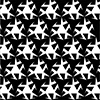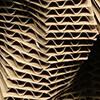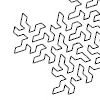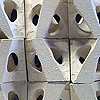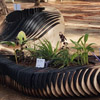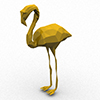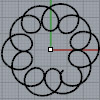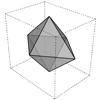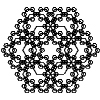Here is one of the exercises I tested with a few students in Architectural Geometry. The exercise is about creating Escher-like patterns. It is an introductory topic on the designerly utilization of regular tessellations. We use square, hexagonal, or triangular tessellations as underlying structures of complex patterns. Below are some of the student works from this exercise. I think the black-and-white coloring helps in terms of reducing the requirements. Although […]
August 2017
This exercise was a popular one in the 2015 and 2016 Architectural Geometry classes. Recently, I found these images of student works. However, some of the students’ names are missing (please e-mail me if one of them is yours). I love this exercise because it is a quick and efficient way of explaining and experimenting with the workflow of digital to physical production. In this particular exercise, students created Rhino […]
Anemone components are still working great, extending the abilities of Grasshopper. Here, I studied a space-filling (or plane-filling) fractal called the Gosper-Peano Curve. You should be very careful about the number of iterations (the N input). Because it can crash your Rhino if you change it to more significant numbers. Also, you should have Anemone components installed in order to run this definition. The generator curve is a special one. […]
In the last semester’s mid-term project of Computation-based Basic Design 2, we experimented with the casting method for studying solids and voids. Students worked in groups of four. First, they designed a set of components within a 10cm bounding cube. These cubes represent 1m3 on a 1:10 scale. After that, they multiplied them into a system of voids with a function for human use. They fabricated at least 24 pieces […]
IABA 2015 International Architecture BiennialAntalya // October 2015, Exhibition at Karaalioğlu Park Design and Prototyping: Fulya Akipek, Tuğrul Yazar, Aslı AydınTeam of students: Alara Lüküs, Burak Güney, Elif Soylu, Tufan İşcan, Tunç ŞenmanConsultants: Anonim İstanbul_Burcu Serdar Köknar, Hande Kalender, Dilek Yürük Video by Elif Soylu COMMON action GARDENS I is an urban garden structure that is exhibited and still in use in Karaalioglu Park as part of the 3rd Architecture […]
Below is a simple tutorial class we studied in Rhino in 2015 and 2016. The exercise is called “A Low-Poly Habitat”. The aim is to create simple polygon models by analyzing the overall geometric topology of an animal body. First-year design students attended the exercise and they are encouraged to create these models using blueprints from www. They used simple commands such as point, line, and surface from 3 or […]
Studied earlier in Grasshopper here, creating a cycloid-like curve actually mimics the physical process of rotating disks on a path. Below is a test in Rhino Python. # Drawing Cycloid-like Curves # 07.08.2017 www.designcoding.net – Tugrul Yazar import rhinoscriptsyntax as rs curv = rs.GetObject(“Select curve”) qual = rs.GetInteger(“Quality”,100) radi = rs.GetReal(“a radius”,4) radi2 = rs.GetReal(“Circle radius”,4) cua = rs.OffsetCurve(curv,[1,1,0],radi2) cevre = 2 * 3.1415 * radi mimi = [] for […]
According to Wolfram, “By the duality principle, for every polyhedron, another polyhedron exists in which faces and polyhedron vertices occupy complementary locations. This polyhedron is known as the dual, or reciprocal”. We can use this method to generate new polyhedra from known ones. I tried to develop a Dual Polyhedra Generator in this Rhino Python script. First, the script asks a user to select a closed polysurface object. Then, it […]
We will see a simple Rhino Python exercise here. I called these Polygon Fractals (or Pentaflakes sometimes). It is both educational and fun to play with them. In Rhino, it can be a good exercise for basic CAD commands and transformations such as move, copy, and scale, and precision drawing operations such as object snapping. Also, in Grasshopper, it can be a good challenge for looping. In Rhino Python, it […]

